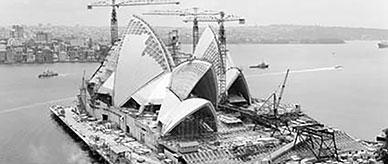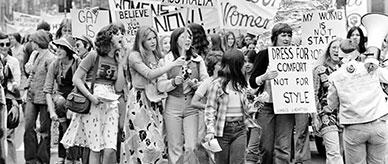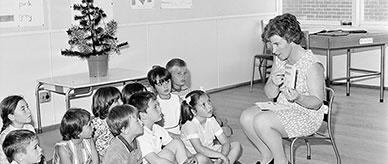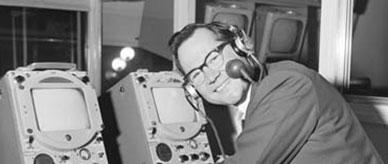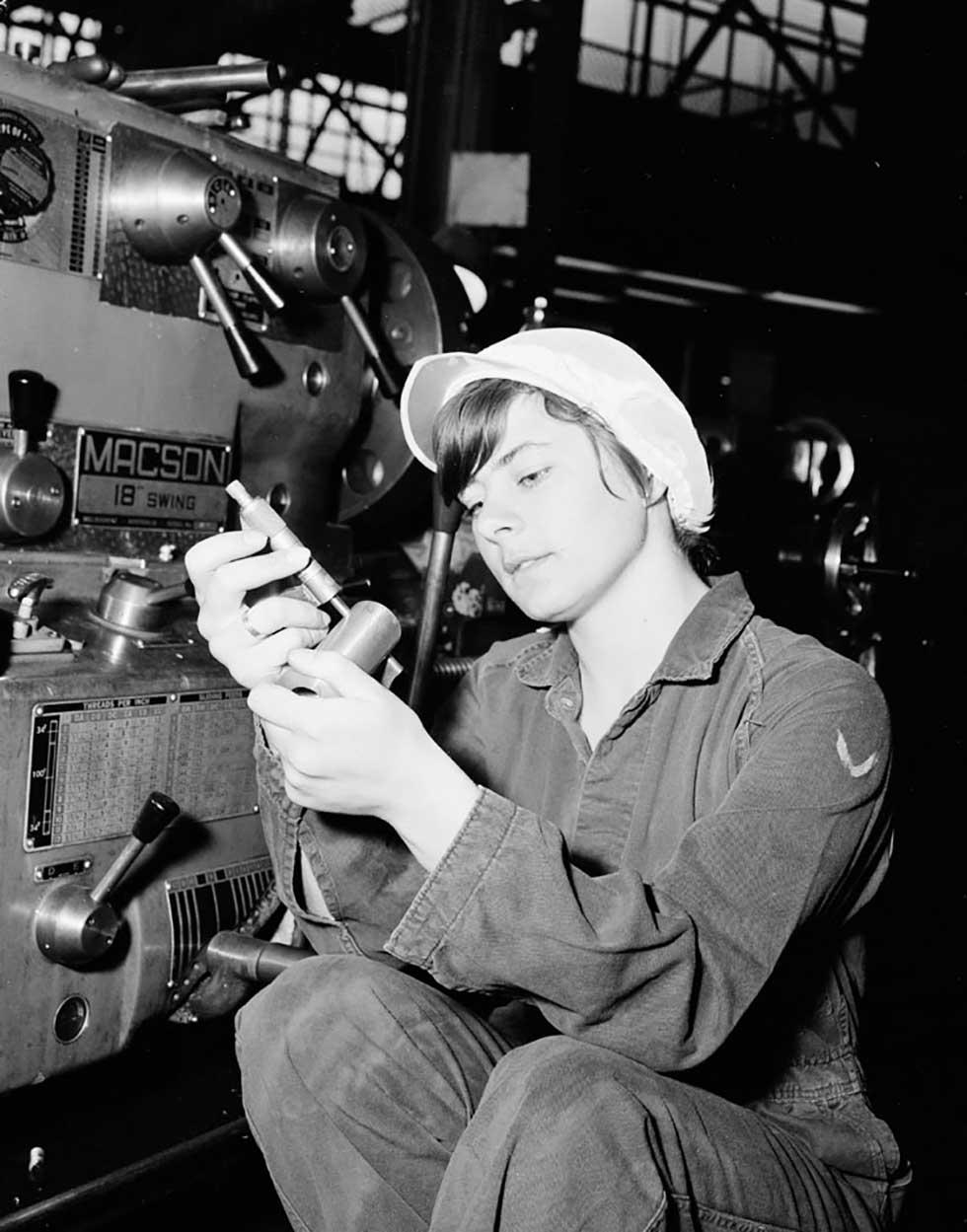


About this record
This is a 1967 black-and-white photograph of Dawn Wild, an apprentice fitter and machinist in Sydney, using a micrometer to measure a 'bush' cut by a lathe. She is wearing a hard hat and overalls and is pictured inside the factory beside the large lathe.
Educational value
- Portrays a female apprentice, signifying the social changes of the postwar era, when women began to take a greater role in the workforce and traditional trades were slowly opening to women – by 2004 women made up about 19 per cent of the metal trades' workforce (including part-time workers).
- Highlights the participation of women in the apprenticeship system in Australia – before 1995, when there was an expansion of the apprenticeship system beyond traditional trades, female participation was never more than 10 per cent; female participation in the apprenticeship system reached 31 per cent by 2000, when women made up nearly 45 per cent of the total workforce.
- Shows Wild working as an apprentice fitter and machinist – a fitter works on a bench, adjusting, joining or fitting parts that have come off a lathe or milling machine; a fitter and turner also knows how to use the lathe; a fitter and machinist does all of those tasks and also knows how to use the milling machine, surface grinder, shaper and other mechanised tools.
- Depicts Wild using a micrometer, a precision measuring instrument used to measure parts that have come off a lathe or other cutting machine; a micrometer measures to an accuracy of 0.001 inch (0.0254 millimetre).
- Shows Wild checking the size of a bush – a bush is a removable tool part designed to fit into any position in the machine that takes extensive wear; it can be replaced easily, removing the need to replace the whole machine and can be made of cheaper material than the main parts, including nylon or bronze.
- Provides an example of the Macson brand of lathe – the '18" swing' on the plaque refers to the maximum diameter of the metal that can be cut by the lathe; 18 inches is about 46 centimetres.
- Displays imperial measures on the lathe – conversion to the metric system was complete in Australia by 1981; the Metric Conversion Act of 1970 had been phased in gradually and, by 1975, the imperial measures of miles, yards, feet and inches had been officially abandoned in favour of the metric system.
- Shows Wild wearing a hard hat and protective clothing – hard hats are required only where there is overhead activity; metal workers today may also wear hair nets (to prevent hair getting caught in a machine), ear muffs or plugs, and eye goggles.
Acknowledgments
Learning resource text © Education Services Australia Limited and the National Archives of Australia 2010.
Related themes
Need help with your research?
Learn how to interpret primary sources, use our collection and more.

